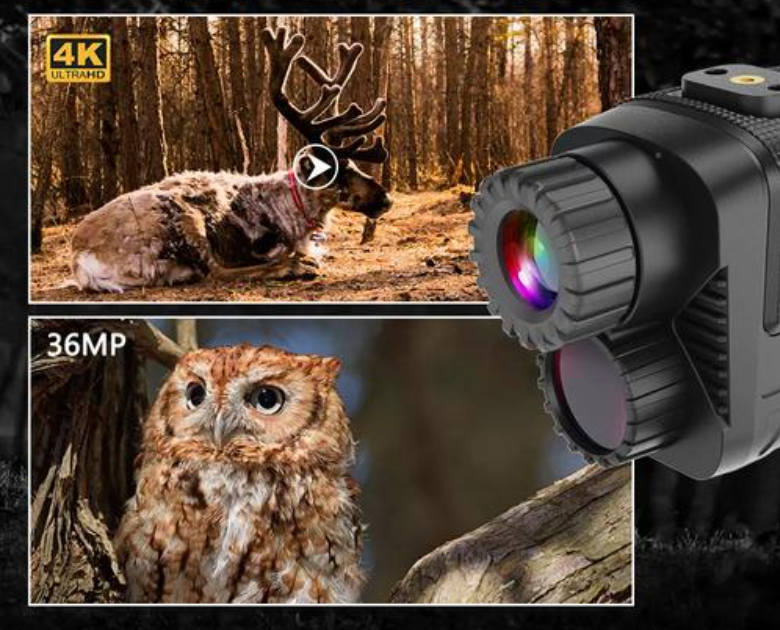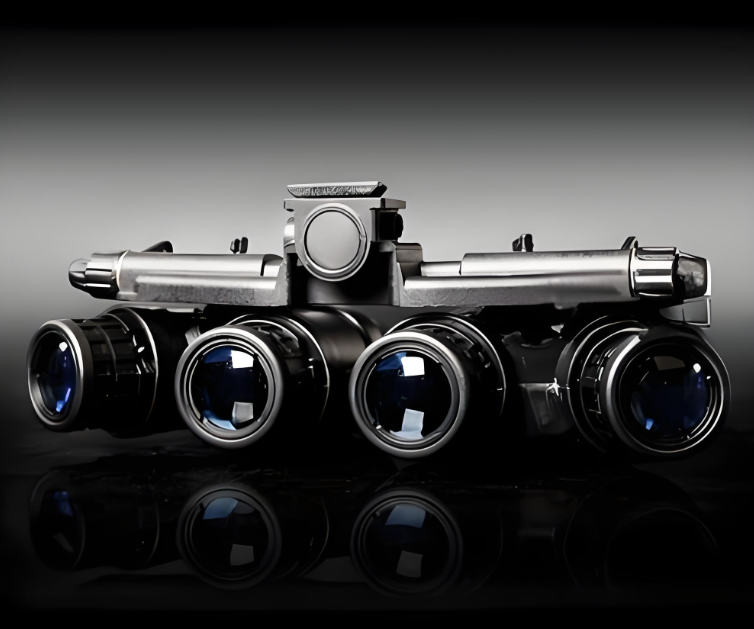Helmet-mounted infrared high-definition eye protection telescope night vision device is mainly based on the following principles:
1. Low-light imaging principle
Light collection
The objective lens of the low-light night vision device will collect weak light in the environment, including starlight, moonlight, and light reflected by artificial light sources. For example, in a field environment with only weak moonlight, the objective lens gathers these lights.
The intensity of the collected light is very weak, and it needs to be amplified and enhanced to be effectively recognized by the human eye.
Photoelectric conversion
There is an image intensifier tube inside the low-light night vision device. The image intensifier tube is the core component of low-light imaging, and the collected light is irradiated on the photocathode of the image intensifier tube. The photocathode is a special material. When light shines on it, a photoelectric effect occurs, that is, photon energy is converted into electron energy to generate photoelectrons.

The number and intensity of these photoelectrons correspond to the intensity of light irradiated on the photocathode. For example, brighter areas produce more photoelectrons, while darker areas produce fewer photoelectrons.
Electron acceleration and multiplication
Photoelectrons are accelerated by the electric field in the image intensifier tube. The accelerated photoelectrons will hit the microchannel plate (MCP) inside the image intensifier tube. The microchannel plate is a thin plate with a large number of tiny channels, each of which has a special coating inside.
When the photoelectron hits the microchannel plate, it will trigger secondary electron emission. One incident electron can trigger multiple secondary electron emissions, thus achieving electron multiplication. After multiplication, the number of electrons is greatly increased, thereby enhancing the signal strength.
Fluorescent screen imaging
The multiplied electrons will continue to move under the action of the electric field and eventually hit the fluorescent screen at the end of the image intensifier tube. The fluorescent screen is coated with fluorescent substances, and when the electrons hit the fluorescent screen, the fluorescent substances will emit light.
Because the intensity distribution of the electrons corresponds to the intensity distribution of the light initially collected, the luminous image formed on the fluorescent screen is consistent with the light and dark distribution of the observed object. The human eye can see the object clearly in a low-light environment by observing the image on the fluorescent screen through the eyepiece.
2. Principle of infrared imaging
Active infrared imaging
For night vision devices with active infrared function, it has its own infrared transmitter. The infrared transmitter emits infrared light, usually light in the near-infrared band. This infrared light is irradiated onto the target object.
The target object reflects the infrared light, and the reflected infrared light is collected by the objective lens of the night vision device. Just like using an infrared camera in a dark room, the target is illuminated by actively emitting infrared light, and then the reflected light is received to form an image.
The collected infrared reflected light also undergoes processes such as photoelectric conversion and electronic amplification (similar to the subsequent steps of low-light imaging), and finally forms a visible image on a fluorescent screen or display.

Passive infrared imaging (thermal imaging)
Some high-end night vision devices have thermal imaging capabilities. All objects emit thermal radiation, and its radiation intensity is related to the temperature of the object. Thermal imaging night vision devices use infrared detectors to detect the thermal radiation emitted by the target object.
Infrared detectors can sense the difference in the intensity of infrared radiation emitted by different temperature areas. For example, a higher human body temperature will appear as a brighter area in the thermal imaging screen, while objects with lower surrounding temperatures will appear as darker areas.
The detector converts the thermal radiation signal into an electrical signal, and after signal processing and image reconstruction, the temperature distribution information is displayed in the form of a pseudo-color image. Different colors represent different temperature ranges, so that users can distinguish the outline and temperature distribution of the target object by observing the image.


